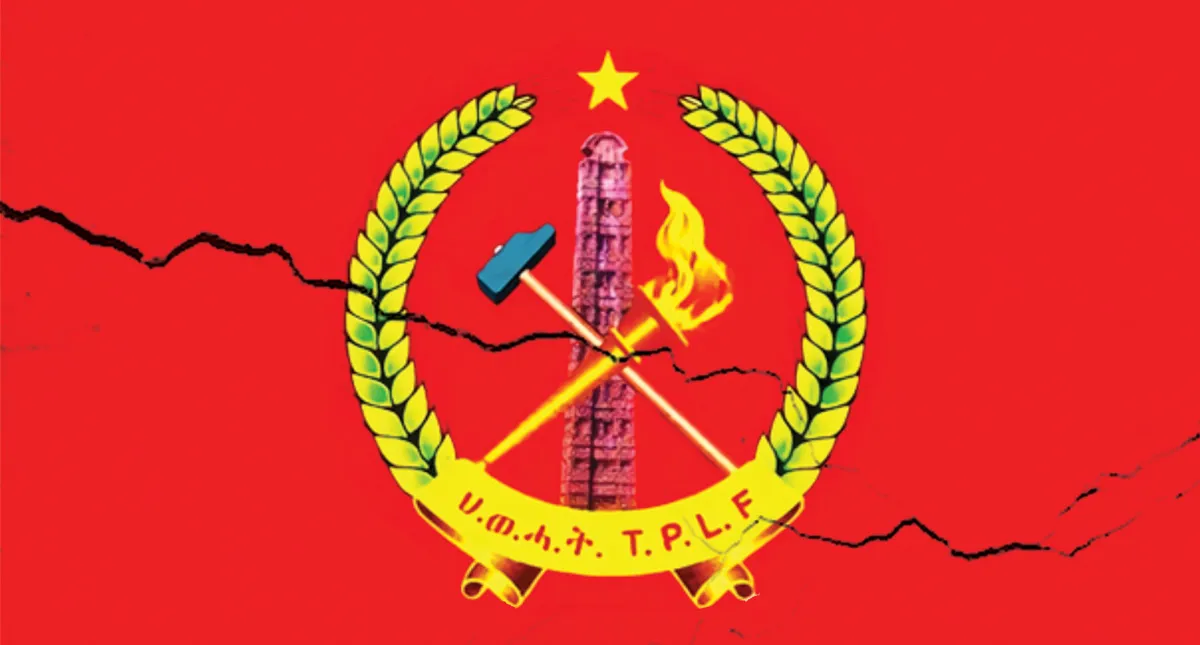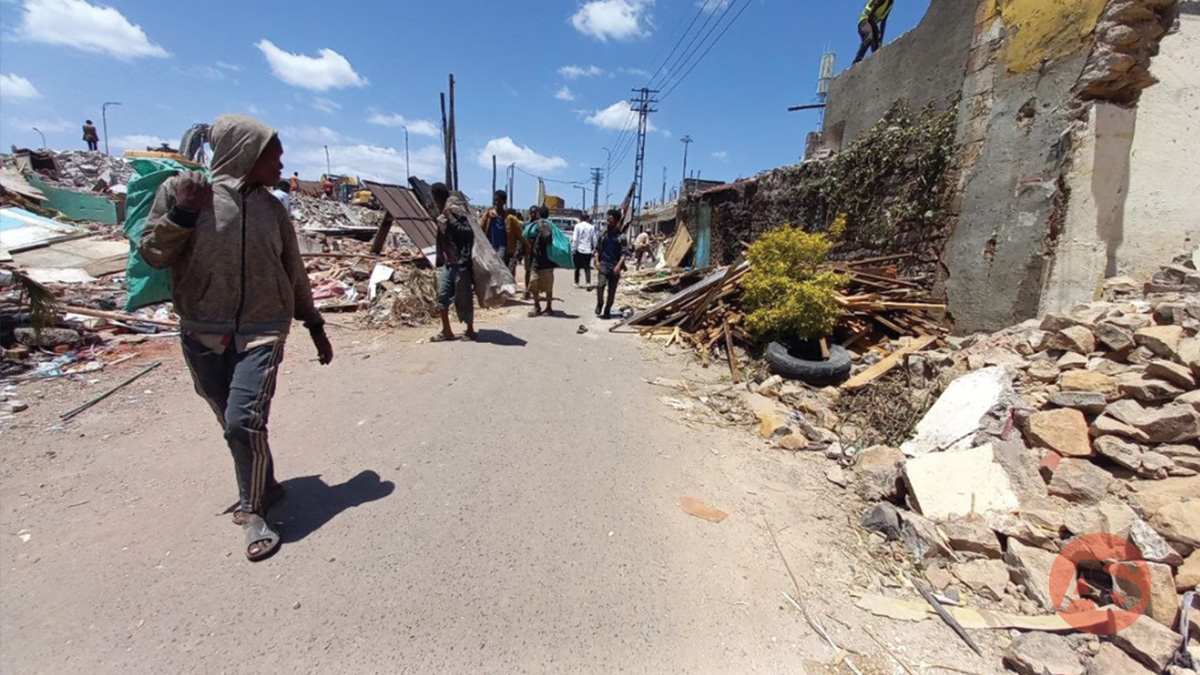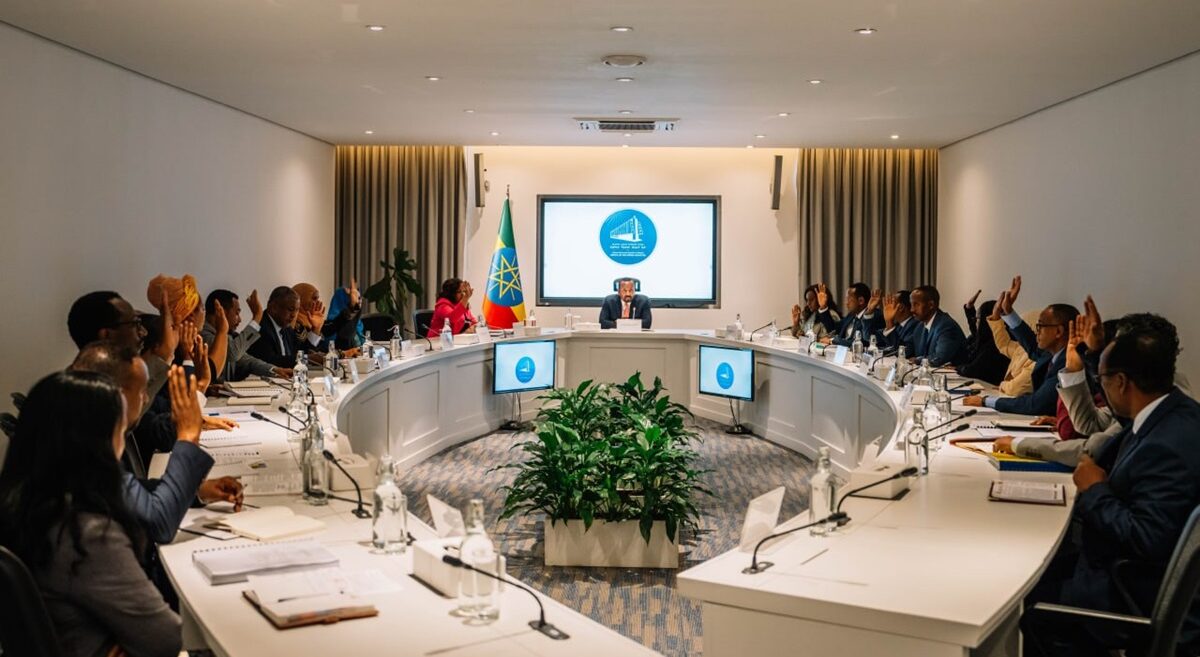Analysis: Afrobarometer’s attempt to influence policy, public opinion on multinational federalism in Ethiopia: Part I

By Getu Teressa @GetuTeressa
Addis Abeba October 01/2020 – Following the fall of the communist regime in 1991, Ethiopia embarked on a radical transformation of the hitherto centralized state structure. After the 1991–1994 transitional period, the Federal Democratic Republic of Ethiopia (FDRE) was established, and the Constitution granted “nations, nationalities, and peoples” the right to self-government and self-determination on their contiguously settled territories, which formed the basis for the formation of federal units.
The federal system, often termed “ethnic federalism” (although “ethnic” is not a word contained in the Constitution), will be referred to as the “multinational federation” in this article. The system has been applauded for granting cultural and linguistic autonomy to historically marginalized communities but has also triggered controversy for recognizing and emphasizing multiple identities and hindering the formation of a common “Ethiopian identity.” The debate has become bitter over the last two years, with some proposing “geographic federalism” as an alternative and others advocating a return to the unitary system of government.
At the peak of this controversy, Afrobarometer (A.B.), a survey research network, conducted a public opinion survey to assess Ethiopia’s political hurricane. The survey assessed the preference of citizens for federalism vs. a unitary system of government, and if they favored federalism, “ethnic federalism” vs. “geographic federalism.”
This two-part article starts by briefly discussing the contemporary contending narratives surrounding Ethiopia’s federalism to provide the contextual framework for the critique of the A.B. survey. Part I only focuses on the contending narratives— assessed within the current political milieu—that form the core of the A.B. survey questionnaire design. Part II discusses the timing of the survey results’ release, the intended goal of the survey, and its ramifications in the current fast-evolving Ethiopia’s political climate and discusses some of the critical concerns in the survey’s validity and reliability.
Part I:
Federalism debate in the era of Abiy Ahmed
The debate over current Ethiopia’s multinational federalism and the Constitution has become more heated since Prime Minister Abiy Ahmed came to power in 2018. This is partly due to the initial liberalization of the political space, now getting increasingly narrow, to accommodate diverse views. But the major catalyst for the explosive debate is the overall attitude of the current leadership towards the Constitution and federalism. In the span of two years, Abiy’s rhetoric, just like that of many in the top leadership ranks, has shifted from ambivalence to making remarks that are considered by many as openly subversive against the current federal arrangement.
Although PM Abiy has reaffirmed on many occasions his commitment to a “true” federal system, one that “recognizes the [multinational diversity and contributions of all Ethiopians,” his statements fall short of making an explicit commitment to preserving the current multinational federalism and the right to self-determination. Similarly, the political program of the ruling Prosperity Party (P.P.) — formed by the merger of three of the four parties that formed the Ethiopian People’s Revolutionary Democratic Front (EPRDF) — emphasizes commitment for democratic federalism that recognizes and is inclusive of Ethiopia’s diversity but has not taken a clear position endorsing the current multinational federalism. Furthermore, there was no mention of the right to self-determination, the basis for the multinational federalism, in this 28-page document. This is in marked contrast to the political program of P.P.’s precursor, EPRDF, that explicitly discussed the right of national and nationalities for self-determination. Therefore, the apparent absence of these quintessential Ethiopian political themes in P.P.’s political program and officials’ political rhetoric, along with other centralizing reforms, are taken as clear evidence that Abiy’s leadership is on the path to undoing the current multinational federalism. According to the International Crisis Group‘s assessment, Abiy’s “…EPRDF merger and other centralizing reforms move him more squarely into the camp of those opposing [multinational federalism], meaning that he now needs to manage the fallout from those who fear its dismantling…” This ratiocination is supported by one of Abiy’s most revealing and emotionally charged comments on federalism, where he exclaimed that victory could not be declared without “dismantling” the current federal system’s structure and ideological foundation and replacing it with a “truly democratic [federal]” system (Speech on October 30, 2019, at 5:53 or 1:04:52).
Abiy’s rhetoric, just like that of many in the top leadership ranks, has shifted from ambivalence to making remarks that are considered by many as openly subversive against the current federal arrangement.
Therefore, more than anything else, the overall message of the current leadership and the direction of the ruling P.P. has undoubtedly energized the previously fringe non-state detractors of the existing multinational federalism, thereby heightening the debate’s explosive nature. As a result, the current political discourse surrounding the fate of the multinational federation is dominated by two broad categories of narratives: the pro-federalist — those who advocate preserving the current multinational federation, and anti-federalist — those who advocate for a radical change to either ‘geographic federalism” or a unitary system. Such a binary categorization, indeed, overlooks the nuances of each view, but this article follows such an approach to, more-or-less, mirror A.B.’s survey questionnaire statements. Furthermore, the article is focused on contextualizing the contending arguments that are embedded in the A.B. survey questionnaire design. These arguments are centered around how the different systems can manage ethnonational diversity, divisions, and conflicts.
Anti-federalist narrative and persuasion strategy
Detractors of the current multinational federalism cast it as a mere relic of the Tigray People Liberation Front’s (TPLF) ideology. Among the critics are high-ranking members of the ruling P.P., who began their careers serving under the tutelage of TPLF- the dominant party in the now-defunct EPRDF coalition. TPLF”s opposition to the merger of the EPRDF coalition and its decision not to join the newly formed P.P. has turned itself into an opposition party and intensified its acrimonious relationship with those now in charge of the P.P. and the country.
Instead of directly arguing against the ideals of self-rule and self-determination, opponents of multinational federalism undermine the system by often making Pavlovian-type associations between the multinational federation and the traumatic memory of the TPLF’s rule: the multinational federation, not just TPLF, is framed as a system that is inducing divisions, conflicts, and repression. The system’s detractors often label it pejoratively as “ye-gosa federalism” (clan or tribal federalism)
A Pavlovian association (conditioning) works by systematically transferring thoughts, feelings, and even physiological responses by repetitively associating two stimuli. In this scenario, an object (TPLF) that elicits a particular response (a negative memory of its repressive rule) is paired with a neutral one (the multinational federation) to the point that the neutral stimulus (the multinational federation) by itself elicits negative emotions.
Ivan Pavlov was a Russian scientist whose research on behavioral psychology was instrumental in the political propaganda promulgated by Soviet Russia and the Nazis and has played an essential role in modern propaganda. Stalin, for instance, established the Pavlovian Front, which was dedicated to the political application of Pavlov’s work. Pavlovianism has become an instinct of many authoritarian regimes.
Ultimately, the application of this strategy in Ethiopia is intended to invoke a fear of and disdain for the current federal system and aims to eventually frame its dismantlement as redemption from “division” and “conflict” and a final “victory” over the TPLF’s repressive legacy.
Instead of directly arguing against the ideals of self-rule and self-determination, opponents of multinational federalism undermine the system by often making Pavlovian-type associations between the multinational federation and the traumatic memory of the TPLF’s rule
Another important Pavlovian principle appears to be employed as a persuasion strategy: the rule posits that conditioning works best when carried out in an environment of minimal “disturbing stimuli”—the suppression of contending narratives in this case! This is augmented by a strategy of creating stronger Pavlovian conditioning and further weaponizing it for political persecution, which necessitated the relentless caricaturing of TPLF at the cost of alienating Tigray. Consequently, the imprisonment, political trials, torture, and killing of pro-federalist opposition parties, activists, and civilians have largely been met with indifference due to, in part, the alleged association with TPLF. An opinion piece published on the Al-Jazeera website titled “Hachalu Hundessa’s death exposed an unlikely anti-Abiy alliance. Some Oromo nationalists have allied with TPLF, threatening inter-ethnic peace in Ethiopia” is an excellent example of this propaganda tactic. This piece purports an alliance between pro-federalist “ethno-nationalist Oromo groups” and the caricatured TPLF in a veiled attempt to justify the persecution of the latter, perhaps both. Similarly, pro-federalism media are being systematically eliminated. The elimination of the pro-multinational federalists media, politicians, and activists from the political space is resulting in the dominance of a one-sided narrative—a narrative that already enjoys a century-old repertoire of “ready-made” stories and institutionalized advantage.
This rule is followed by totalitarians to condition the masses quickly by insulating them from “mental and political contamination” and monopolizing information and narratives. In what appears to be a similar mindset, Abiy had convened a summit —that participated professionals from multiple disciplines including psychologists, psychiatrists, and philosophers— aimed at gaining insight into how to “cleanse” the masses of what he described as contamination of their minds, hearts, and souls, which includes espousing alternative political or historical narratives that he disagrees with. Ultimately, if this expression is a mere figurative language or indicative of a totalitarian mindset can only be judged by how Abiy deals with opposition parties and those who do not share his understanding of Ethiopia’s history.
It is in this political climate that A.B. survey was conducted, and the results were released at the peak of intense anti-federalism persuasion and maneuvering. Whether this strategy will ultimately succeed in tipping the balance in favor of anti-multinational federalism is yet to be seen, but the A.B. survey was a ‘timely’ attempt to ‘gauge’ —perhaps influence—public opinion on federalism, and more specifically, on the multinational federation.
Pro-federalist narrative and the Qeerroo revolution
The TPLF-led federalism experiment has—and indeed had—strong critics among the supporters of multinational federalism. Despite its formally decentralized state structure and nominally devolved decision-making power to regional states, TPLF maintained centralized rule through its affiliated regional parties, which were led by most of the current leaders and high-ranking members of the incumbent P.P.
The last 30 years of federalism have provided a territorial space in which each ethnolinguistic group has exercised the “… right to speak, to write and to develop its own language; to express, to develop and to promote its culture; and to preserve its history” (Article 39[2] of the Constitution). This was undoubtedly a step forward in protecting the cultural and linguistic rights of marginalized peoples, a departure from Ethiopia’s 100-plus years of “nation-building” efforts through linguistic and cultural assimilation.
However, the rampant corruption, economic marginalization, cronyism, and human rights abuses carried out by TPLF’s regional representatives fueled the discontent of multinational federation proponents, as exemplified by the Qeerroomovement, which spearheaded the demise of the TPLF rule. Thus, the revolution was against TPLF’s centralization of power, corruption, marginalization, and brutal rule executed through the regional parties, from among which emerged a “reformist” group in 2018.
The reformist group elected Abiy as the PM to address grievances and transition the country to democracy. Lauded as a reformist, Abiy and his leadership’s attitude toward federalism soon began to cause wariness among the many who had catapulted him to power in the hope that he would champion a genuinely democratic multinational federalism as part of the reform. Contrary to expectations, with the dissolution of the coalition EPRDF and the formation of the P.P., the central government is becoming more powerful at the expense of regional states.
Although pro-federalist groups do not outrightly dismiss TPLF’s manipulation of ethnonational divisions or the existence of poorly managed implementation of the new order, they reject the notion that multinational federalism is inherently and invariably divisive or creates unmanageable divisions. The very emergence of ethnonational movements, most with the aim of secession, during Ethiopia’s unitary system of government is used as an argument against the existence of a causal relationship between the multinational federation and the ethnonational divide. Furthermore, the apparent decrease in secessionist ethnonational demands over the last 30 years is used to argue against the notion that multinational federalism leads to the disintegration of the state. Taking their arguments further, pro-multinational federalists allege that anti-federalist forces are deliberately exaggerating or using various mechanisms to accentuate ethnonational divides and conflicts, especially over the last two years, in order to undermine the multinational federation by way of a self-fulfilling prophecy.
Self-determination and geographic federalism
Concealed in the federalism debate is the future of the constitutional right to self-determination and the right of nations, nationalities, and peoples with “predominantly contiguous territory” to form self-governing states. These core principles gave birth to the multinational federation.
Ethiopia’s ethnolinguistic groups occupy the largely delimited territories that formed the basis of the current federalism structure under which political, economic, cultural, and linguistic autonomies were to be exercised. In spite of the mostly territorial features of the existing multinational federalism, another form of territorial federalism branded “geographic federalism” has been presented as an alternative institutional arrangement. Proponents of geographic federalism consider this a solution to the alleged “division” and “conflict” brought by multinational federalism. The concept explicitly tries to uncouple federal units from the “titular” privilege of nations, nationalities, and peoples.
However, geographic federalism can be viewed as a divide-and-rule strategy whereby homogenous groups, especially those larger groups inhabiting a contiguous territory, are partitioned into two or more federal units. The envisioned goal is to weaken ethnonational identities and discourage ethnonational mobilization and collective action. To replace ethnonational identities with a single “Ethiopian identity,” some proponents of geographic federalism propose recasting federal units that cut across ethnonational groups as in the pre-1991 unitary systems of provincial administrative units. This arrangement will inevitably default back to reinstituting the homogenization project that had been promoted as essential for nation-building. The proposed geographic federalism is therefore not going to be seen just a mere redrawing of the federal units; instead, it is conceived as a divide-and-rule policy and a functional reconstruction of the aborted or failed unitary “nation-building” predicated on an abrogation of the right to self-determination of the nation, nationalities, and peoples of Ethiopia. As such, it risks the re-emergence of rebellions and secessionists movements.
The 30 years of the multinational federalism experiment has hardened the attachment of the marginalized communities to the idea of self-determination, particularly since it has partially achieved its promises. For many historically marginalized ethnonational groups, multinational federalism is seen as sine qua non for exercising the right to self-determination. The constitutional right to self-determination is seen as their protection from internal domination. Therefore, its detractors undoubtedly find it easier to sell their notion of geographic federalism—cloaked as a “true” or “pragmatic” federalism —than an outright unitary system of government. However, proponents of this system are relying heavily on successfully undermining the support for the multinational federation by labeling it as inherently “divisive,” “igniting conflict,” and associating it with the traumatic memory of the TPLF’s rule while concealing that geographic federalism invariably undermines the principle of the collective right to self-determination.
Do the results of the A.B. survey result offer hope to the proponents of geographic federalism? Will the results of the survey shape public opinion in favor of geographic federalism?
In Part II of this article, I will explore how the above approaches to undermining or defending the contending views on multinational federalism shape the A.B.’s survey questionnaire design and how it impacts the survey’s integrity. AS
_________________________________________//____________________________________

Editor’s Note: Getu Teressa is an assistant professor of clinical medicine based in United States. He can be reached at dabalaa@hotmail.com







